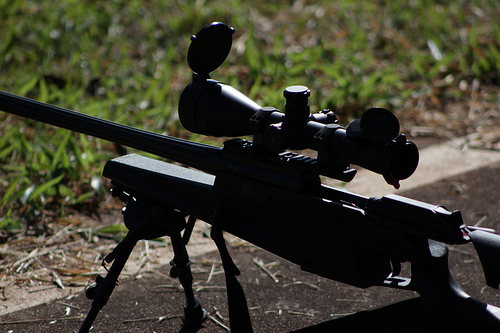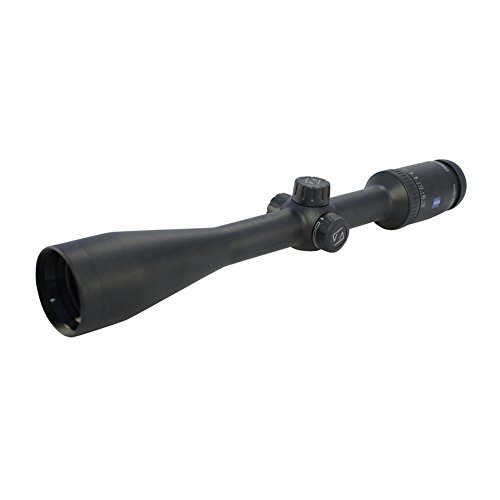Today, we are taking a look at a bitter battle between two titans: Zeiss Conquest vs Leupold VX-3. Both optics are on the higher end of the mid-tier level of optics. They are designed for sportsmen and especially hunters. These optics excel in this role for a variety of purposes. However, which is the better optic? Let’s find out!
Zeiss Conquest vs Leupold VX-3 Round One: Options
The Carl Zeiss Conquest line is made mainly from 2-10×42 to 5-25×50, but it also comes in 1.2-5x36mm. In total, there are several different options in the Zeiss Conquest line (see all the Conquests here). They range quite broadly in terms of magnifications and offer a wide variety of different options for hunters across the United States and really the world. The Carl Zeiss Conquest is quite the versatile option.
The Leupold VX-3 and VX-3i optics also offer very broad options in terms of both size and magnifications. On the low end, the Leupold line ranges from 1.5-5×20 for close range brush hunting to the powerful 8.5-25x50mm for longer range engagements. In total, the Leupold VX-3 and VX-3i line is made up of several different magnifications (see all the VX’s here).
This sounds like a tie, right? Well, the Zeiss Conquest also offer 5 different reticles for a variety of different uses. These reticles include drop compensation from 600, to 800, to 1,000 yards. Leupold, on the other hand, offers more than a dozen different reticle options for their optics, including illuminated options. Since Leupold offers more reticle options than Zeiss, it just barely squeaks by.
Zeiss Conquest vs Leupold VX-3 Round Two: Clarity
Both optics are remarkably clear and provide the user with a very consistent and useable system to view moving targets. Clarity is incredibly important in hunting optics. You’ll need to see animals that are often the same color as their backgrounds. So clarity is a critical deciding factor in scope selection.
First and foremost, both scopes offer a very high level of clarity. Both scopes have the ability to be used for hunting and any hunter is well equipped with either scope. To judge this, we have to take a very close look at the optics and become very, very picky. The Zeiss features an amazing level of clarity that the company is famous for. The lenses amplify light incredibly well and give the user a very clear and consistent picture.
The Leupold not only has superb clarity but an incredibly efficient lens system. The Twilight lens system allows the user to see as the sun is coming up and as the sun is going down. This system is important for hunters since most hunting is done at sunrise and sunset. Combined with the Diamond Coat 2, which is famous among the Leupold line. Which is better, though? Another tough comparison, but the famous German Zeiss glass squeaks by—at a slightly higher price point, of course.
Zeiss Conquest vs Leupold VX-3 Round Three: Durability
Hunting optics need to be durable in two different ways. First off, they need to be able to withstand the power of recoil. Hunting rifles are often considerable weapons and quite powerful. In Conquest’s and VX-3’s cases, however, both optics are high-end and can shrug off the recoil from even the most powerful full-powered rifle calibers.
The other level of durability is their ability to shrug off external factors. This includes the ability to resist shock, water, and fog. Both optics are fog-proof and are purged to prevent fog from building up into the system. This level of durability is natural to optics of this caliber.
Where the optics separate is the fact the Zeiss can be submerged in over 13 feet of water. The Leupold, unfortunately, cannot. However, it is not as cut and dry as that. The Leupold’s diamond coat not only helps provide a bright and clear sight picture but protects the lenses. This one is a tie as far as I’m concerned and needs to be individually established by the end user (that is, will you be near any bodies of water when you hunt?).
Zeiss Conquest vs Leupold VX-3 Round Four: Price
Zeiss’ obsession with absolute quality is one that leads users to the point of near obsession. Leupold prefers to place quality into specific portions of the scope. Either way, you get a very solid optic that is capable and reliable. The difference certainly comes down to price. Zeiss’ obsession with quality does make a more expensive optic, and this shows from the way the dials click to the way the optic mounts. Zeiss stressing on quality makes the optics generally a bit pricier (check current prices, though, to make sure) so Leupold is obviously the more affordable option.
Zeiss Conquest vs Leupold VX-3 Round Five: Ergonomics
The Zeiss scope features a very consistent turret system that makes making adjustments very simple and very precise. The Leupold VX-3 features similar towers, but they are not fingertip adjustable. Zeiss does have superior turrets that are more intuitive and easier on the user.
The Leupold VX-3 have a very smooth and consistent magnification ring that features a moderately sized nub that makes controlling the magnification easy and smooth. Zeiss features a nub, but it’s much smaller. Trying to use the Zeiss nub with gloves would be close to impossible so you might keep that in mind if you’re mostly shooting in winter.
Zeiss Conquest scopes on average tend to be longer and heavier than the Leupold VX-3 series. This difference is relatively minor but does deserve to be noted purely for competition sake. Overall, both scopes are easy to use and I find myself coming up short in how exactly to decide which wins this category. However, Leupold does have a very slight advantage.
Which to Choose
Regardless of which way you go both scopes are well made and incredibly durable, clear, and bright. The Zeiss Conquest and the Leupold VX-3 are both fantastic optics and are both made by reputable optic’s companies. Either one you choose is almost guaranteed to be the right choice. If you’re on a budget, however, go for Leupold. If you’re not, buy the Conquest. If you’re really loaded, buy both! Good luck!









Having done a comparison between the above, the Zeiss is slightly better in extreme low light, but better again was the Conquest 3x9x50, Leoupold was better for warranty and reticle selection. What would I buy, a Leupold as I would not lose an animal in low light with the Leupold with a 50m front lense, the warranty and response time if the scope is sent back is way better with leupold.